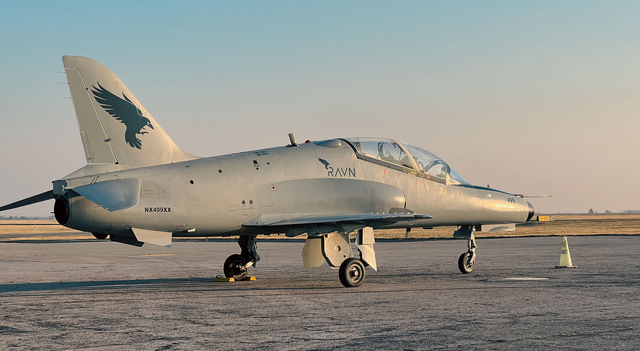 Air USA becomes RAVN Aerospace
Air USA becomes RAVN Aerospace
Recently the well-known Red Air provider Air USA has adopted a new name, RAVN Aerospace. Since the name change a number of aircraft in their fleet has already been adorned with the name ‘Raven’ and a logo that depicts this bird.
The company provides ADAIR (Adversary Air), CAS (Close Air Support) and JTAC (Joint Terminal Air Controller) as well as ISR (Intel, Surveillance, and Reconnaissance) Training.
This variety of tasks is fulfilled with various aircraft types that can be chosen for a specific goal. According to RAVN, using an aircraft type dedicated to a specific task can bring substantial financial advantage for customers.
The fleet currently comprises six Aero L-39s in various subtypes, an impressive line-up of (former South Korean) British Aerospace Hawk Mk67s, and a MiG-29UB is used for supersonic missions.
Five former Royal Australian Air Force Pilatus PC-9/A trainers are mostly used for JTAC training.
RAVN is also in the process of receiving a number of (some sources state a total of seventeen) Cessna T337H Turbo Skymasters. These used to be employed by AirScan Inc. and operated even during activities over Iraq and Afghanistan.
Currently only one Ce337 is registered on RAVN in the FAA register. The ‘Push-Pulls’ will be used for ISR training.
 But RAVN has even more spectacular plans: the introduction of (Classic) F-18 Hornets in the Adversary Air role. In March 2020 the Royal Australian Air Force (RAAF) announced the sale of their retiring fleet of McDonnell Douglas F/A-18A/B Hornets.
But RAVN has even more spectacular plans: the introduction of (Classic) F-18 Hornets in the Adversary Air role. In March 2020 the Royal Australian Air Force (RAAF) announced the sale of their retiring fleet of McDonnell Douglas F/A-18A/B Hornets.
The Royal Canadian Air Force has taken over some 25 of the RAAF Hornets. Of the original 75 that were delivered to the RAAF, 4 have been written off in the past years. The Australian Government has decided that 8 (possibly 9) Hornets will be preserved at RAAF bases and various aviation museums in the country. This means that a number of 38 (37 ?) F/A-18s will be delivered to RAVN. At the moment of the announcement of the sale, it was expected that the deliveries to the USA would not begin before 2023/2024.
With the acquisition of a large fleet of Australia’s F/A-18s (at that time Air USA) RAVN has made a good catch as they were operated in a dry climate and have never been used for carrier landings, so avoiding any related fatigue.
The planes were also some of the most advanced legacy Hornets in service, as they underwent an incremental enhancement program known in Australia as the Hornet Upgrade Programme.
These upgrades included replacement of the original radar with Raytheon’s AN/APG-73, integration of equipment including Saab’s BOL countermeasures dispensing system, the Elta EL-L/8222 electronic countermeasures (ECM) pod, Northrop Grumman’s AN/AAQ-28(v) Litening AT (advanced targeting) pod, and MBDA ASRAAM within-visual-range missiles.
Currently registered aircraft:
Sources: AINonline, AirforceTechnology, and The Drive


